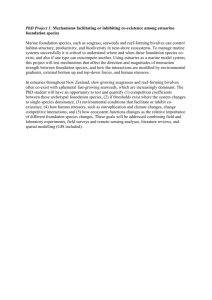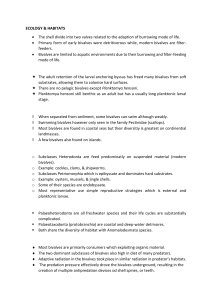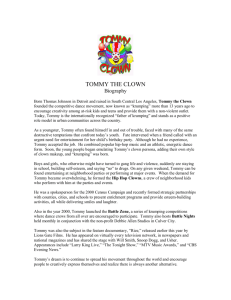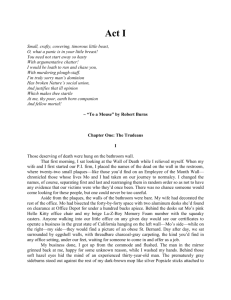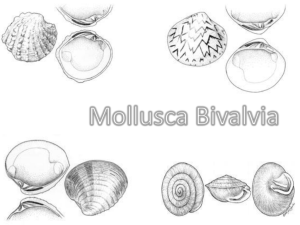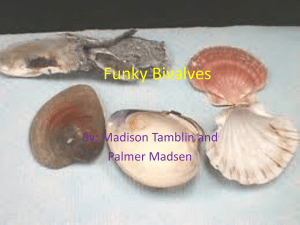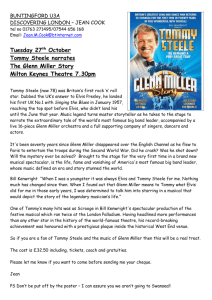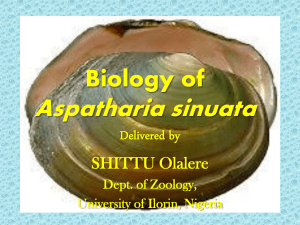INVERTEBRATE ZOOLOGY Practice Exam 2
advertisement
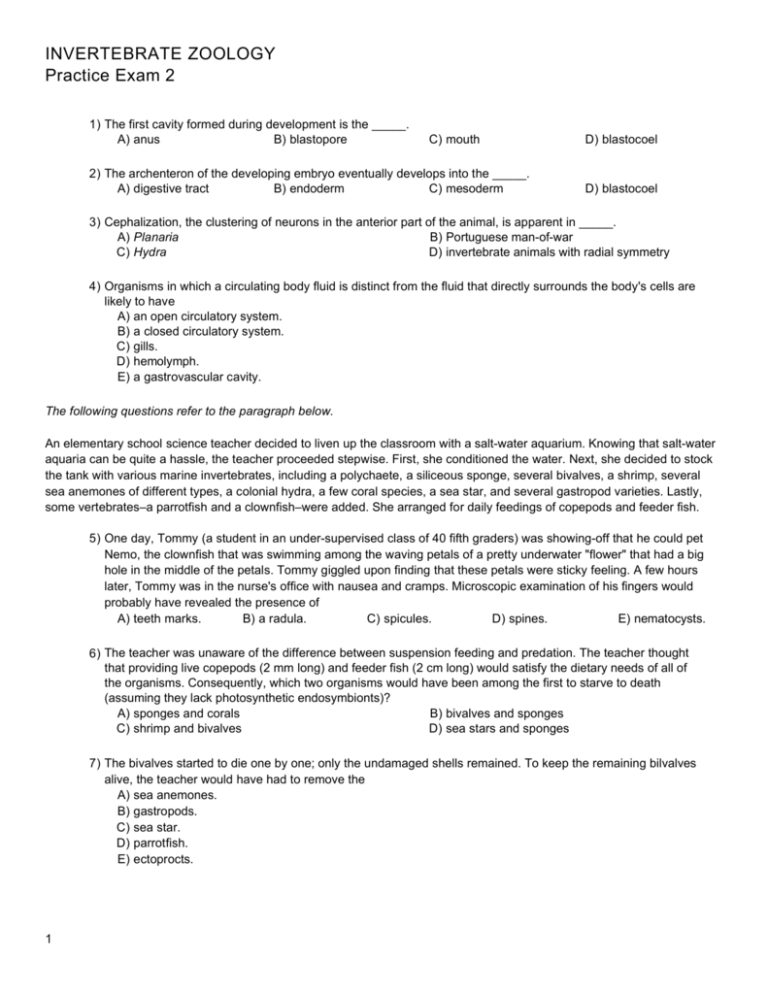
INVERTEBRATE ZOOLOGY Practice Exam 2 1) The first cavity formed during development is the _____. A) anus B) blastopore C) mouth 2) The archenteron of the developing embryo eventually develops into the _____. A) digestive tract B) endoderm C) mesoderm D) blastocoel D) blastocoel 3) Cephalization, the clustering of neurons in the anterior part of the animal, is apparent in _____. A) Planaria B) Portuguese man-of-war C) Hydra D) invertebrate animals with radial symmetry 4) Organisms in which a circulating body fluid is distinct from the fluid that directly surrounds the body's cells are likely to have A) an open circulatory system. B) a closed circulatory system. C) gills. D) hemolymph. E) a gastrovascular cavity. The following questions refer to the paragraph below. An elementary school science teacher decided to liven up the classroom with a salt-water aquarium. Knowing that salt-water aquaria can be quite a hassle, the teacher proceeded stepwise. First, she conditioned the water. Next, she decided to stock the tank with various marine invertebrates, including a polychaete, a siliceous sponge, several bivalves, a shrimp, several sea anemones of different types, a colonial hydra, a few coral species, a sea star, and several gastropod varieties. Lastly, some vertebrates–a parrotfish and a clownfish–were added. She arranged for daily feedings of copepods and feeder fish. 5) One day, Tommy (a student in an under-supervised class of 40 fifth graders) was showing-off that he could pet Nemo, the clownfish that was swimming among the waving petals of a pretty underwater "flower" that had a big hole in the middle of the petals. Tommy giggled upon finding that these petals were sticky feeling. A few hours later, Tommy was in the nurse's office with nausea and cramps. Microscopic examination of his fingers would probably have revealed the presence of A) teeth marks. B) a radula. C) spicules. D) spines. E) nematocysts. 6) The teacher was unaware of the difference between suspension feeding and predation. The teacher thought that providing live copepods (2 mm long) and feeder fish (2 cm long) would satisfy the dietary needs of all of the organisms. Consequently, which two organisms would have been among the first to starve to death (assuming they lack photosynthetic endosymbionts)? A) sponges and corals B) bivalves and sponges C) shrimp and bivalves D) sea stars and sponges 7) The bivalves started to die one by one; only the undamaged shells remained. To keep the remaining bilvalves alive, the teacher would have had to remove the A) sea anemones. B) gastropods. C) sea star. D) parrotfish. E) ectoprocts. 1 8) The teacher and class were especially saddened when the colonial hydrozoan died. They had watched it carefully, and the unfortunate creature never even got to produce offspring by budding. Yet, everyone was elated when Tommy (now recovered) noticed a small colonial hydrozoan growing in a part of the tank far from the location of the original colony. The teacher, who proclaimed a miracle, was apparently unaware that these hydrozoans have A) an asexual stage. B) alternation of generations. C) a polyp stage. D) a medusa stage. E) spontaneous generation. 9) What would be the best anatomical feature to look for to distinguish a gastropod from a chiton? A) production of eggs B) number of shell plates C) presence of a muscular foot D) presence of a rasp-like feeding structure 10) Which characteristic is shared by cnidarians and flatworms? A) a distinct head B) a digestive system with a single opening C) dorsoventrally flattened bodies D) radial symmetry 11) The most recent common ancestor of all animals was probably a _____. A) cyanobacterium B) multicellular fungus C) flagellated protist D) multicellular algae 12) Compared to the water around them, freshwater invertebrates are correctly described as which of the following? I. hypertonic II. hypotonic III. isotonic A) I only B) II only C) III only D) I and III only E) II and III only 13) Compared to the seawater around them, most marine invertebrates are _____. A) hyperosmotic and isoosmotic B) hyperosmotic C) isoosmotic D) hypoosmotic 14) In examining an unknown animal species during its embryonic development, how can you be sure what you are looking at is a protostome and not a deuterostome? A) The animal is clearly bilaterally symmetrical. B) You see a mouth, but not an anus. C) There is evidence of cephalization. D) The animal is triploblastic. 15) What was an early selective advantage of a coelom in animals? A coelom _____. A) allowed asexual and sexual reproduction B) was a more efficient digestive system C) contributed to a hydrostatic skeleton, allowing greater range of motion D) allowed cephalization and the formation of a cerebral ganglion 2 Answer Key Testname: PEXAM2 1) D 2) A 3) A 4) B 5) E 6) B 7) C 8) D 9) B 10) B 11) C 12) A 13) C 14) B 15) C 3

